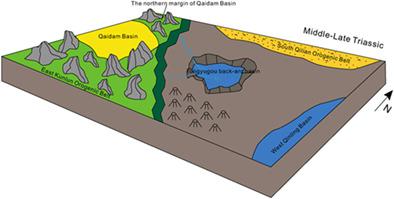当前位置:
X-MOL 学术
›
Geolog. J.
›
论文详情
Our official English website, www.x-mol.net, welcomes your
feedback! (Note: you will need to create a separate account there.)
Detrital zircon LA–ICP–MS U–Pb ages for sedimentary rocks from the Kuhai–Saishitang area, NE Tibet: Constraints on provenance and Cu exploration
Geological Journal ( IF 1.4 ) Pub Date : 2021-05-22 , DOI: 10.1002/gj.4163 Jia Chen 1 , Yun Zhao 1 , Tong Pan 2 , Chunji Xue 1, 3 , Ryan Mathur 4 , Pengfei Sun 1
Geological Journal ( IF 1.4 ) Pub Date : 2021-05-22 , DOI: 10.1002/gj.4163 Jia Chen 1 , Yun Zhao 1 , Tong Pan 2 , Chunji Xue 1, 3 , Ryan Mathur 4 , Pengfei Sun 1
Affiliation

|
The Kuhai–Saishitang area, which can be divided into the Tongyugou–Saishitang and southern Kuhai areas, is located in the northeastern Tibetan Plateau. Numerous Cu deposits have been discovered in the Tongyugou–Saishitang area, with the ore-forming materials being derived from both sedimentary rocks and igneous intrusions. In contrast, no deposits have been found in the southern Kuhai area. The mineralization potential in the southern Kuhai area remains unclear. We collected a siltstone sample from the Tongyugou–Saishitang area and a sandstone sample from the southern Kuhai area for zircon LA–ICP–MS U–Pb dating, which yielded the youngest ages of 228 and 277 Ma, respectively. The samples exhibit similar age spectra, suggesting that these rocks have a common source. Detrital zircons from the samples can be divided into five groups on the basis of their U–Pb ages: Early Mesozoic–Late Palaeozoic (228–335 Ma), Early Palaeozoic (372–565 Ma), Neoproterozoic (645–995 Ma), Mesoproterozoic (1,154–1,693 Ma), and Paleoproterozoic–Neoarchaean (1,827–3,128 Ma). On the basis of a detailed comparison of the age spectra with those in the adjacent regions, we propose that the sedimentary rocks of the Kuhai–Saishitang area have an identical provenance that was derived mainly from the northern margin of the Qaidam Basin during the Middle–Late Triassic. The southern Kuhai area is also a potential target for further Cu exploration.
更新日期:2021-05-22











































 京公网安备 11010802027423号
京公网安备 11010802027423号